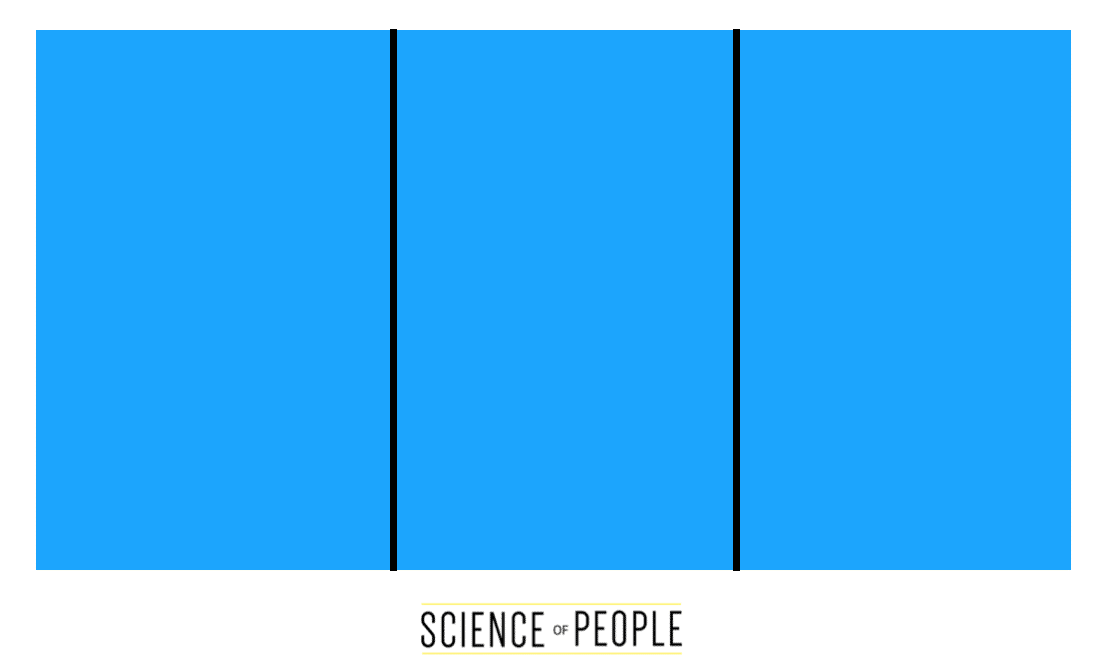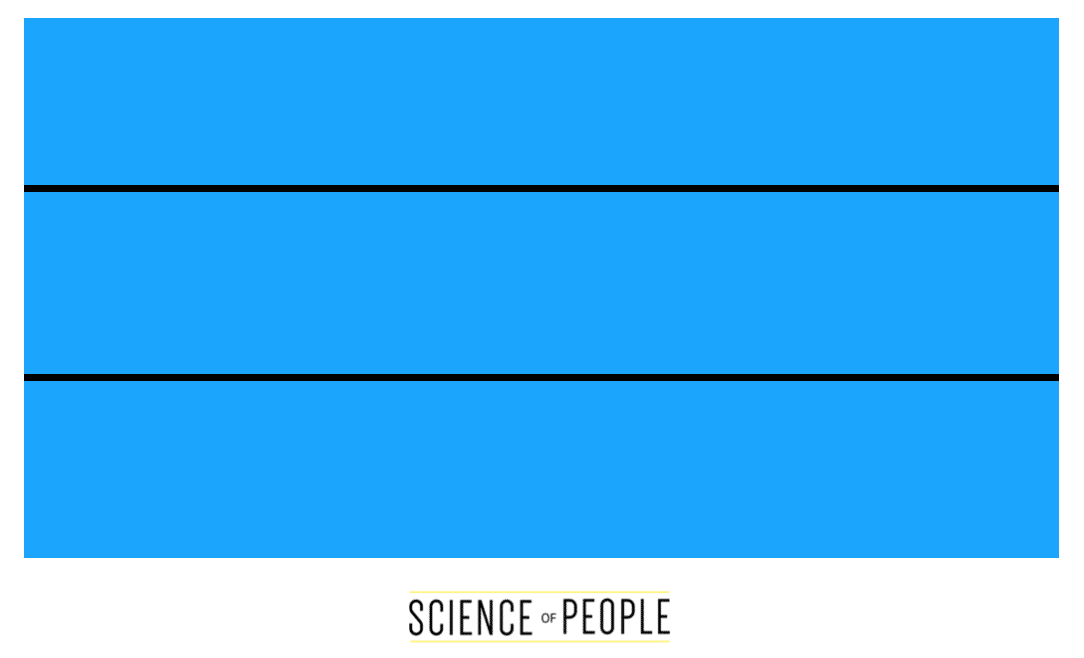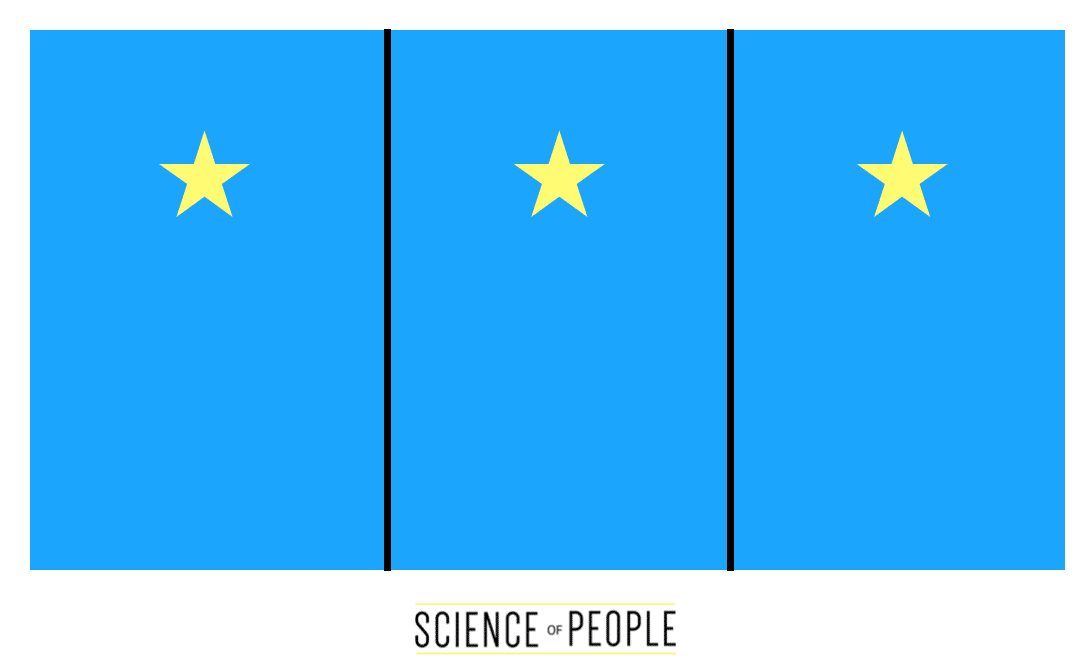A large stage can be incredibly intimidating. You stage presence signals your confidence, experience and competence. Whether you’re:
- Giving a speech
- Public Speaking
- Or working a room
I want to show you how to manage and improve your stage presence in this video excerpt from our course People School. Check out our steps:
The Stage is Your Signal
Most speakers only prep the verbal aspect of their content—the words in their speech or presentation. Maybe a little thought goes into body language, but usually the nonverbal piece isn’t optimized.
Confidence on stage signals confidence with the material.
For example, the way we command our use of space often signals our perceptions and mindsets. If a speaker enters the stage, goes behind the podium and stands small and tight, this can signal to the audience that the speaker thinks or feels nervous or closed-off. On the other hand, if a speaker enters the stage with no notes, open body language and works the entire space, it signals to the viewer that this speaker feels comfortable and this translates to comfort with the content.
Our use of space and contexts is often a reflection of our inner thoughts and moods and this is directly related to the audience’s perception of how well you know your content. Even if you know your content well, if you don’t know how to use the space this can signal low competence or low confidence in your work.
Action Step: Prep your stage plan with your content plan. Outline both your verbal and nonverbal.
The Stage is Your Muse
When an audience is listening to a speaker for even a short amount of time, lack of movement or stage dynamism or hand gestures can put their brains right to sleep. As the speaker, it’s your responsibility to create motivation and excitement for your audience.
If you stay in one spot on the stage or lock yourself behind a podium, it’s extra work for your audience members to stay awake and engaged with your content.
Action Step: Keep the audience awake with your movement. And don’t be afraid to work it! Your speech or presentation isn’t limited to one spot on stage. It’s about the entire room, so be sure to work all angles and areas.
The Stage is Your Foundation
Think of the stage as your grounder. When you outline how your content flows, your movement on the stage should follow.
Your content should match your stage movement.
Think about how your content flows. Most informational presentations follow a linear style of:
- Beginner level information or tips
- Medium or advanced tips, sharing examples
- And ending on next steps or a conclusion
Your stage movement can match this flow. Here’s a typical stage breakdown:

The far left side of the stage is where you can share your openers and beginner tips. The middle part of the stage is the meat of the content and your examples. And the far right is where you’ll bring it all together with your final thoughts and call to action.
Another option is to reserve the middle part of the stage for your most important points. With this type of purposeful movement, you’re training the audience to recognize this use of the stage as a very important moment in your content. It works as a nonverbal “hey, listen up!”
Action Step: Map out your stage by chronology, level of importance or by theme.
You can also organize the stage map in terms of intimacy with your audience:

The very back of the stage creates the most distance between you as the speaker and your audience. This area works well as a starting point for your presentation and signals big picture information and strategy. This is typically where I start most of my speeches and videos as I’m delivering the basic overview or agenda for the content.
As you move forward with the content, you can move closer to your audience. This middle area also works well for personal stories or anecdotes.
The area closest to your audience is the perfect space for bringing your viewers into your content. If you’re asking your audience to join you in a challenge or are encouraging them on a specific action point, step close to signal their involvement and inclusion.
Action Step: Visually show the progress of intimacy by where you stand in relation to your audience.
Practice Your Stage First Impression
Your first impression doesn’t happen upon the first word of your speech. It happens the moment you take the stage.
Most speakers craft their opening and closing lines with care, but those moments leading up to the start of the speech are often forgotten.
How will you enter? Where will you plant?
Start by observing the stage environment:
- Are you entering on steps? From backstage? From stage left or right? Determine where you will first come into view of the audience.
- Pick your plant location before you even get on stage. When you know where you’ll stand on stage, your entrance is more purposeful and confident.
Think about TED Talks. The speakers are told explicitly to stand on the little red carpet. And I would know…
Action Step: Make up your own TED carpet. Once decided upon, walk towards it with eye contact and purpose. Plant with 2 feet once you’ve arrived. Here are my favorite options for planting spots:

Front and center signals: “I’m here! I’m ready to talk to you.”
Side options work great if you have a technical presentation using slides. You’ll want to give some space away from the middle so your audience can see your content visuals.
Work With What You Got
Your arrive to your presentation and guess what? You hate the shape of the room, the stage is bigger or smaller than you expected or you’re told you have to stay behind the podium.
Ugh, the worst.
The good news is that all these tips still apply even if the space isn’t ideal. When you’re prepared for any setting, you can adapt on the spot.
For example, when I gave my TEDx Talk in London, I was a little nervous about having to stay on the red carpet since I’m a stage mover. I asked if I could leave the red carpet during my Talk and they said:
“If you leave the red carpet, your video will be disqualified from Ted.com.”
Yikes! In order to set myself up for less movement, I gave my Talk in the highest heels I own. These shoes are uncomfortable and very hard to walk in. So every time I had the instinct to move on stage, I didn’t.
Action Step: Movement, content fluidity and planning still hold in odd spaces.

As you wrote, “Your first impression doesn’t happen upon the first word of your speech. It happens the moment you take the stage” is 100% True. Btw, every point you mentioned is a pro tip to Improve Stage Presence.
As you wrote, “Your first impression doesn’t happen upon the first word of your speech. It happens the moment you take the stage” is 100% True. Btw, every point you mentioned is a pro tip to Improve Stage Presence.
As you wrote, “Your first impression doesn’t happen upon the first word of your speech. It happens the moment you take the stage” is 100% True. Btw, every point you mentioned is a pro tip to Improve Stage Presence.
As you wrote, “Your first impression doesn’t happen upon the first word of your speech. It happens the moment you take the stage” is 100% True. Btw, every point you mentioned is a pro tip to Improve Stage Presence.